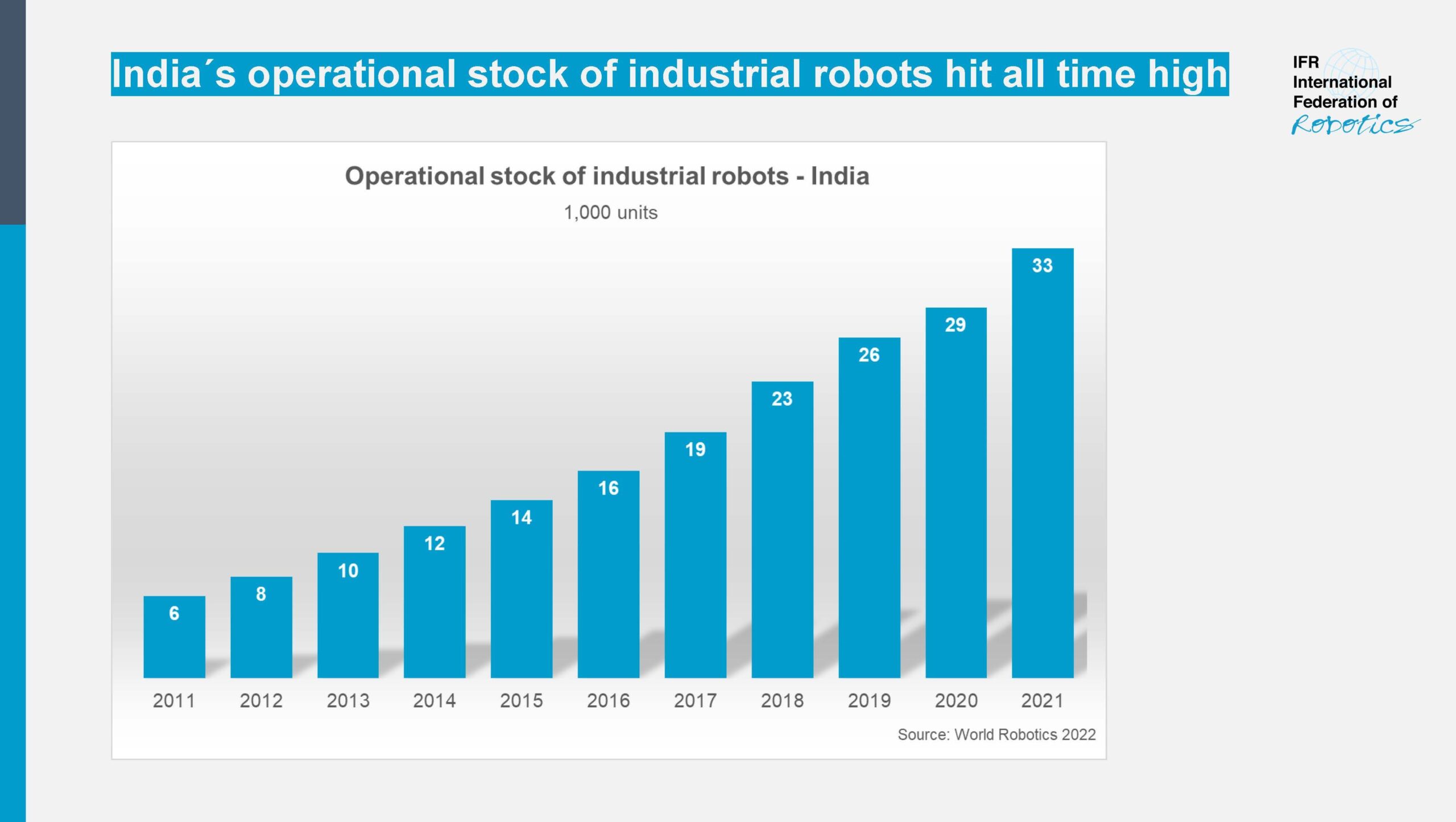|
Listen to this article  |

India’s operational stock of industrial robots. | Source: IFR
Industrial robot sales in India have reached a new record with 4,945 units installed in 2021, according to the International Federation of Robotics (IFR). This is a 54% increase compared to 2020 when 3,215 units were installed.
India now ranks tenth in the world in annual installations, according to the IFR. The country’s largest robotics customer is the automotive industry, which operated 31% of the country’s industrial robots in 2021.
“India is one of the world’s fastest-growing industrial economies,” Marina Bill, President of the International Federation of Robotics, said. “Within five years, the operational stock of industrial robots has more than doubled, to reach 33,220 units in 2021. This corresponds to an average annual growth rate of 16% since 2016.”
Within India’s automotive industry, installations more than doubled to 1,547 units in 2021, a 108% increase. Robot density, which measures the number of industrial robots per 10,000 workers, reached 148 in 2021.
Other significant robot buyers in India in 2021 include the metal industry, which installed 308 units, a 9% decrease from 2020, the rubber and plastics industry with 246 units, up 27%, and the electrical and electronics industry with 215 units, up 98%.
While India doesn’t rank in the top ten in robot density in the world, that could change within the next decade. In 2010, China’s automotive robot density hit 131 units per 10,000 workers, and in 2021 it had grown to 772 units.
Now, China has a higher overall robot density than the United States and was the fifth most automated country worldwide in 2021.
The Indian government has taken measures to support the use of robotics in the country. The Production Linked Incentive (PLI) scheme, for example, set to run until 2025, subsidizes companies that create production capacity in India in robot customer industries like automotive, metal, pharmaceuticals, and food processing.
“As a result of the recent supply chain disruption, companies are rethinking their nearshoring strategies in Southeast Asia,” Bill said. “India has traditionally been a popular destination for nearshoring in the manufacturing segment. The Indian government wants the country to be considered for new diversification options such as friendshoring, which is partnering with countries that share similar values and interests.”
Credit: Source link


Comments are closed.